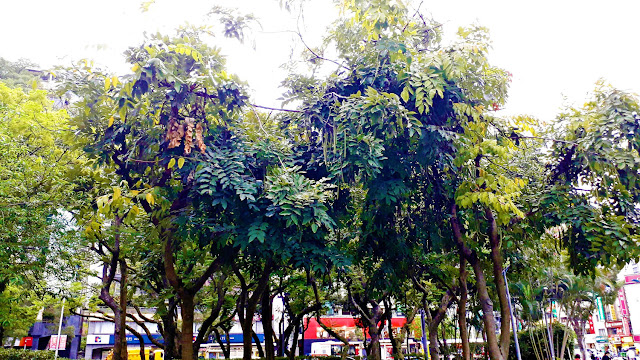Deciduous tree are also called hardwoods, these tree types typically shed their leaves in autumn. Deciduous trees have different-shaped leaves, depending on tree species; for example, star, heart and oval shapes It refers to the trees that shed leaves seasonally, and most of the broadleaf trees are deciduous. It has a high rate of photosynthesis because of the shape and the arrangement of the leaf patterns. Shedding leaves prepare them for winter and have good water preservation. Since there is seasonal shedding, these trees are affected by winter weather conditions.
Most of Coniferous trees are evergreens, which means you'll have greenery year-round on these tree types. Coniferous trees have leaves that are needle-shaped.
In Da'an Park, there are about 14 typical trees species, which mainly belong to the Decidous group, including: Alstonia scholaris, Bischofia javanica, Ficus elastica, Ficus microcarpa, Bambusa vulgaris, Tabebuia aurea, Liquidambar formosana, Pistacia chinensis, Pterocarpus indicus, Cinnamomum camphora, Morus australis. Conifer species include Araucaria heterophylla and Roystonea regia (Palm), the rest are grasses.
In this study, we classified the flora in Da'an Park into 7 main categories, including 4 types of Deciduous group: Tree type 1, tree type 2, tree type 3, and tree type 4. Besides, There are also classes Palm, Conifers, and Grass (Table 1)


























